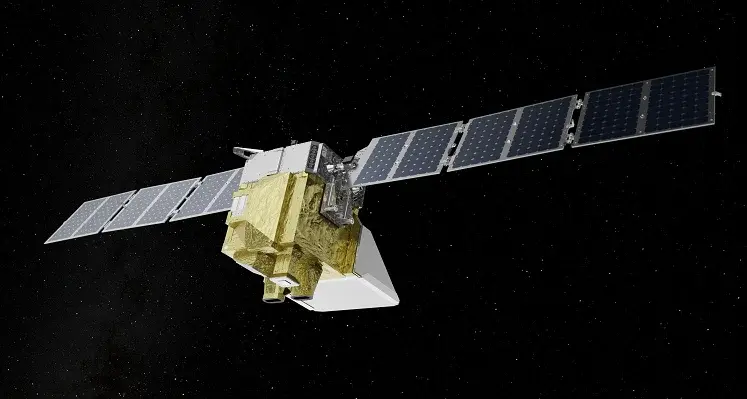On 4 March 2024, MethaneSAT, a groundbreaking methane-detecting satellite developed and funded by the environment non-profit Environmental Defense Fund, was launched into orbit, with the aim of speeding up the reduction of methane emissions
Methane is a potent greenhouse gas with more than 80 times the warming power of carbon dioxide, over the first 20 years after it is released into the atmosphere. Methane from fossil fuel operations, agriculture and other industries is responsible for around 30% of today’s global warming.
Circling the Earth 15 times a day, MethaneSAT will measure changes in methane concentrations as small as three parts per billion, focusing initially on oil and gas operations. MethaneSAT can detect methane levels from entire oilfields. It can detect and quantify small emissions over wide areas that other satellites cannot see, and can also pinpoint large emissions from single sources, to provide a complete picture of the methane problem. In addition to identifying emission sources and rates for a given region, MethaneSAT will enable emission loss rates to be compared across major oil and gas regions worldwide and performance over time. Specially-developed analytics will trace those emissions back to their sources within those target regions.
Data from MethaneSAT will be public to enable companies, government regulators and other stakeholders to speed up emissions reductions, track progress and hold polluters responsible. Interactive emissions data will be available to anyone directly from www.MethaneSAT.org and on Google Earth Engine.
“Cutting methane pollution from fossil fuel operations, agriculture and other sectors is the single fastest way to slow the rate of warming as we continue to decarbonise our energy systems,” said EDF president Fred Krupp. “To do that requires comprehensive data on this pollution on a global scale. MethaneSAT will show us the full scope of the opportunity by tracking emissions to their source.”
“MethaneSAT’s superpower is the ability to precisely measure methane levels with high resolution over wide areas, including smaller, diffuse sources that account for most emissions in many regions,” said Steven Hamburg, EDF chief scientist and MethaneSAT project leader. “Knowing how much methane is coming from where and how the rates are changing is essential.”
Momentum on reducing methane emissions has been growing, with 150 countries now having signed the Global Methane Pledge to cut their collective methane emissions by at least 30% from 2020 levels by 2030. More than 50 oil and gas companies signed the Oil & Gas Decarbonisation Charter at COP28, which includes a pledge to reduce methane emissions to near zero by 2030. In December, a new initiative was launched by EDF, Bloomberg Philanthropies, the International Energy Agency, RMI and the UN Environment Programme’s International Methane Emission Observatory to provide transparency and accountability frameworks to help track and drive methane emission reductions from the oil and gas industry.
In January the Biden Administration proposed rules for a fee on excess methane emissions, which will require accurate emissions reporting. European legislation will see gas importers required to provide empirical emissions data, while Japan and Korea – two of the largest LNG buyers – have launched plans to begin requiring emissions data from suppliers.









